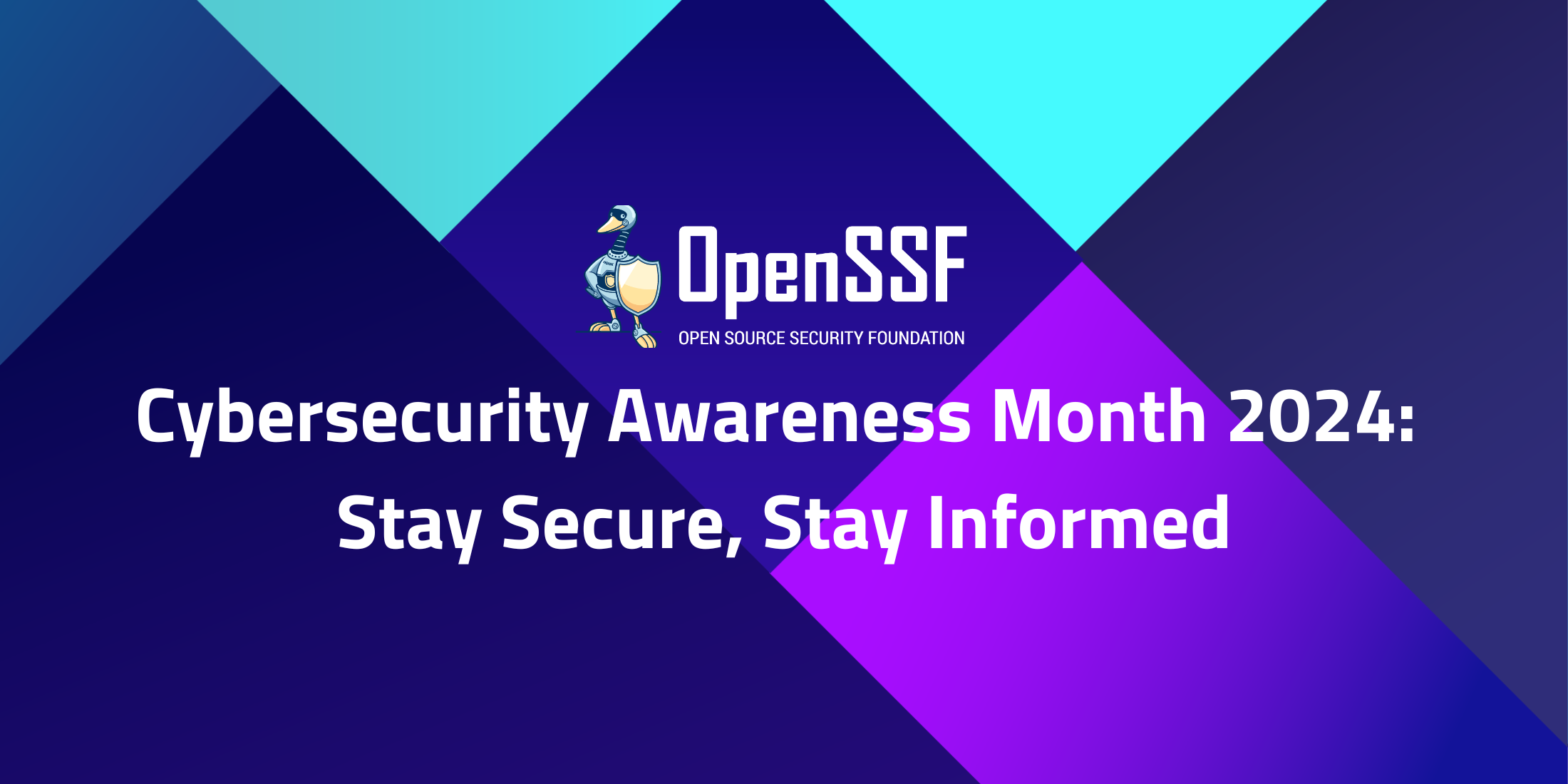
By Ashwin Ramaswami
October is Cybersecurity Awareness Month! Proclaimed since 2004, October is the month dedicated to raising awareness about cybersecurity and taking simple steps to keep individuals and organizations safe.
This year, let’s focus on collective action across different sectors. This post explores more about what actions different stakeholders can take in order to increase their cybersecurity awareness and resilience.
Organizations
Organizations should prioritize educating decision-makers about internal cybersecurity policies, particularly those related to open source software (OSS) governance, to reduce risks.
For example, firms must ensure they aren’t using outdated or forked versions of critical software libraries like log4j, which was at the center of a major security vulnerability in 2021. Ensuring regular updates and patches for OSS components can mitigate significant risks. Additionally, creating clear incident response strategies, conducting regular security audits, and fostering a cybersecurity culture across all departments are vital steps to prevent breaches.
Organizations in the public sector should signal that OSS security really matters, and that it’s a priority. Enterprises can show their continued commitment to cybersecurity by creating dedicated streams of investment, for the number of work hours they are dedicating staff resources to work on cybersecurity-related problems.
Finally, every organization can improve from having more clearly specified and delineated job roles. Having specific job roles with individual responsibilities across the security stack helps to create clarity and predictability in terms of filling the right resources and roles needed to fully ensure best practices around cybersecurity are followed.
Developers
Developers are on the front lines of cybersecurity. They need to adopt security-focused development practices, such as employing secure coding standards and integrating automated security tools in their development pipelines. For example, they can use the OpenSSF Scorecard to assess open source projects for security risks or take the Secure Software Development Fundamentals Courses.
Shifting left in security—by testing for vulnerabilities earlier in the software development life cycle (SDLC)—is crucial for minimizing the number of exploitable bugs that reach production. Developers should also participate in continuing education and stay updated on emerging threats, such as supply chain attacks, and the best practices for securing open source dependencies.
Academic Institutions and Learners
Academic institutions play a vital role in preparing the next generation of cybersecurity professionals and fostering a security-first mindset among students. Offering courses that emphasize both theory and hands-on experience with tools like penetration testing frameworks, encryption protocols, and threat modeling can significantly elevate cybersecurity readiness. One good example of such a course are the Secure Software Development Fundamentals Courses currently offered by the OpenSSF.
Additionally, institutions should regularly update curricula to reflect the rapidly evolving nature of cyber threats, and encourage participation in cybersecurity challenges and competitions to build practical skills. For learners, taking personal initiatives to stay informed, attend workshops, and earn certifications can provide a strong foundation for future careers in cybersecurity.
What Can We Do Next?
To further advance cybersecurity awareness and action, bringing stakeholders together can also be extremely helpful to share best practices and facilitate information sharing. For example, the SOSS Fusion conference—which is in October 2024—brings together leaders from the cybersecurity, open source, and software development communities to discuss cutting-edge strategies for securing the software supply chain.
These events highlight the importance of collaboration and ongoing education to address emerging cyber threats and reduce vulnerabilities.
Cybersecurity Awareness Month is a time to reflect, learn, and take proactive steps to enhance our digital defenses. By working together, training, and collaborative events, we can build a more resilient and secure future for everyone.